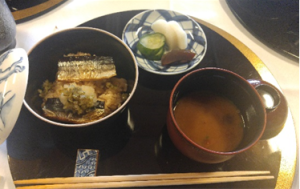Exploring the roots of Japanese cuisine
Yoshie Doi

The roots of Japanese cuisine, which is becoming popular all over the world, date back to the Heian period. It is said that it was at the end of the Heian period that the four basic ingredients of one soup and three dishes, rice, miso soup, side dishes (side dishes), and pickles, were created.
Japanese cuisine has developed through the use of koji, which can only be produced in humid Japan, where water is abundant, there are four seasons, and the food of the mountains and sea is abundant. Traditions from the Heian period were inherited in Kyoto as well, and event foods and festival feasts developed.
Three months before Heiankyo was established in Kyoto (July 794), the capital’s Tozai City was built, and the city was divided into Shichijobomon and Shichijo Oji, and the city was established symmetrically around Suzaku Oji. The products that would be handled in Higashi City in the first half of the month until the 15th, and in Nishi City from the second half of the 16th, were also determined in detail. The market opens at noon and ends with the sound of drums just before sunset.
Foods sold in both eastern and western cities include sakumochi (sakubei, a type of Chinese sweets that was passed down in the Nara period and the ancestor of somen. In the past, somen was also made in Kyoto), oil, seaweed, sweets, Dried fish, raw fish, rice, salt, barley, soy sauce, sea vegetables (*seaweed) were sold in Higashi City, miso (seaweed), etc. were sold in Nishi City. The oil here is kerosene, which was in great demand in the capital, where there were many temples and shrines, and is not edible oil.
During the Heian period, both vegetables and seafood were called Na, which meant side dishes. In the Nara period, fish was written as sakana. It seems that vegetables, fish, and other side foods were called Na.
At that time, people ate two meals a day, and in “Oan Monogatari” (a work from the early Edo period, set in a samurai household in Hikone), porridge was eaten for breakfast and dinner. and They were able to eat some rice, only when the older brother went to the mountains to shoot a gun. (Nameshi is rice cooked with chopped greens, briefly boiled and mixed with salt.) It is described that it was edible. It was in the latter half of the Edo period that people started eating three meals a day.
“Ryori Monogatari” (1643), which is said to be Japan’s oldest cookbook, does not introduce cooking methods using fats and oils. Tempura, which was introduced during the Azuchi-Momoyama period, was high in fat and was far away from the common people. Tempura was introduced from Nagasaki to the Kansai region and then to Edo, where street food tempura became popular as fast food.
Originally, Japanese food was based on “boiled” and “raw” foods. Japan has an abundance of clean water, and seafood is eaten raw, pickled in vinegar, salted, grilled, grilled, steamed, etc.
Vegetables other than grated radish were eaten boiled or pickled, and seasoned with fermented seasonings such as soy sauce or miso, kelp, bonito flakes, and dried sardines. After the war, vegetable salads, which were popular among women, pushed the popularity of Western vegetables, and lettuce, watercress, broccoli, and celery were eaten, but only in recent years.
Japanese food is the essence of Japanese culture, and is a luxurious meal that celebrates the blessings of nature and enjoys seasonal vegetables. Every day, I say “Itadakimasu!” with gratitude.
The end of document
Translated by Masami Otani
